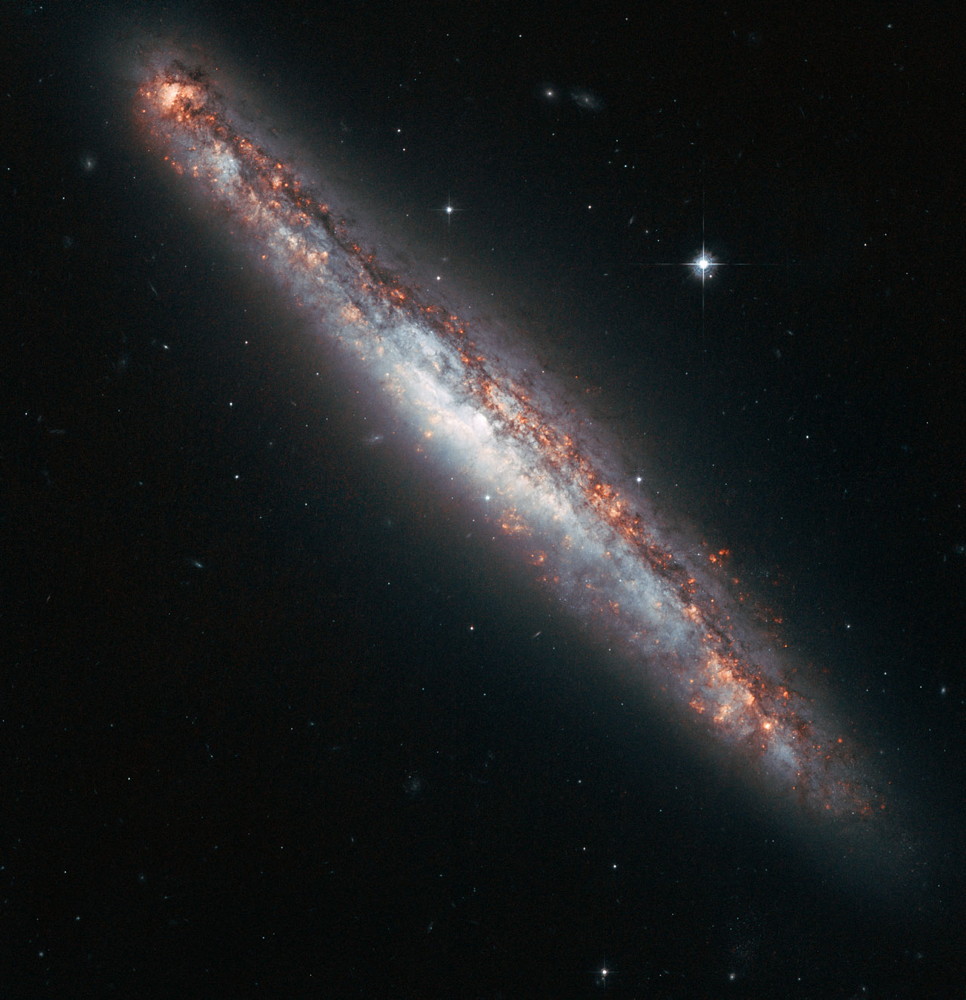Galactic 'Fountain of Youth' Flows in Hubble Photo

A new photo from the Hubble Space Telescope has revealed what scientists have called a veritable galactic "fountain of youth," one that would turn the fictional pirate captain Jack Sparrow of the "Pirates of the Caribbean" films green with envy.
Journeying to the mythic Fountain of Youth is Sparrow's goal in Disney's latest installment in the adventure film franchise, "Pirates of the Caribbean: On Stranger Tides." But the space fountain spotted by Hubble is no myth. [See Hubble's photo of a galaxy fountain]
The new Hubble image shows the galaxy NGC 5775, which is located about 85 million light-years from Earth in a group of galaxies called the Virgo Cluster. NGC 5775 is a spiral galaxy that is tilted away from Earth in such a way that only its edge is visible.
This edge-on position of the galaxy has allowed astronomers to spot a vast halo of hot gas around NGC 5775, but how the material actually got there is unclear, researchers said.
"Some astronomers think that hot gas from the disc is driven into the halo by supernova explosions, which is then returned to the disc as it cools — like a massive galactic fountain," according to a Hubble telescope image description. Because of the phenomenon, Hubble researchers dubbed it a "galactic fountain of youth" when they released the image this month. [Spectacular Hubble Telescope Photos]
There is also another oddity about the galaxy NGC 5775 that has attracted attention from astronomers: a bridge of hydrogen gas linking the galaxy with a galactic neighbor called NGC 5774. [Most Amazing Hubble Discoveries]
The two spiral galaxies are on a collision course and are in the early stages of merging, according to Hubble scientists. However, neither object has yet sprouted a tidal tail of gas and stars — created by intense gravitational disruptions — that typically precedes galaxy mergers.
Get the world’s most fascinating discoveries delivered straight to your inbox.
The Hubble Space Telescope is a joint project by NASA and the European Space Agency.
This story was provided by SPACE.com, a sister site to Live Science. Follow SPACE.com for the latest in space science and exploration news on Twitter @Spacedotcom and on Facebook.




